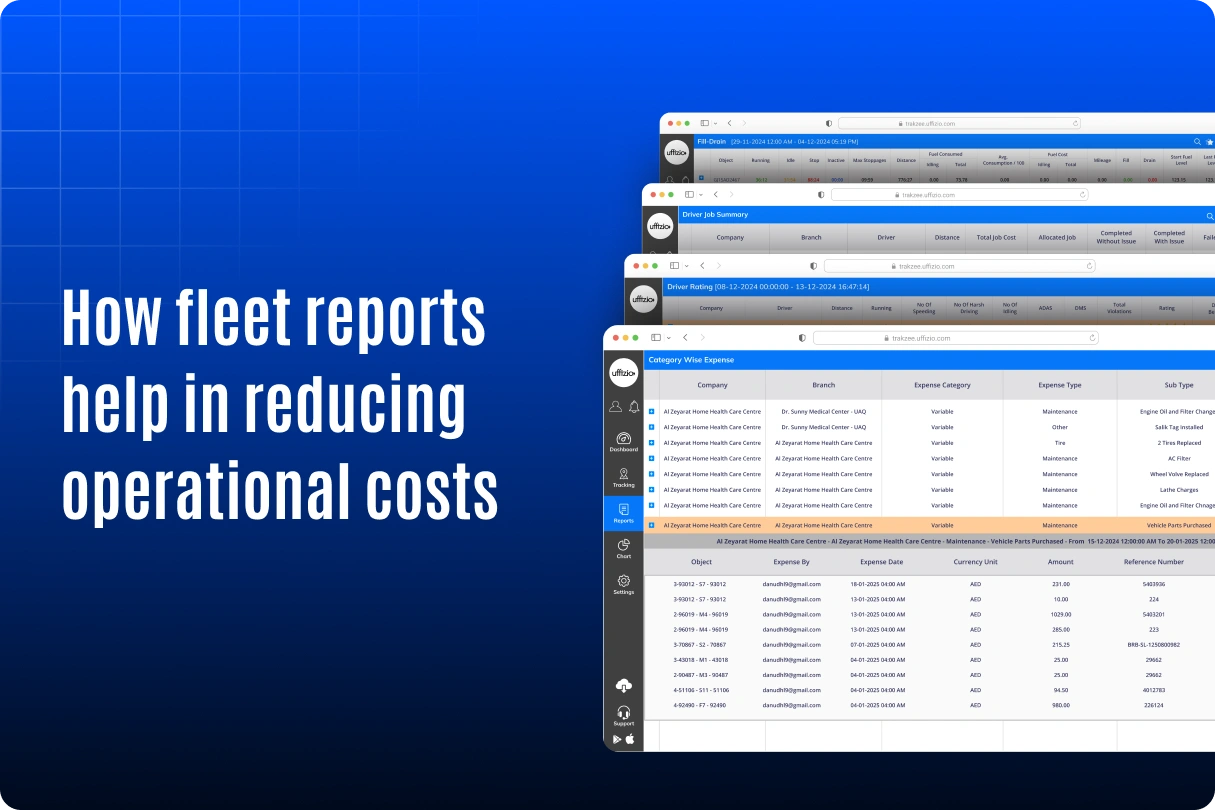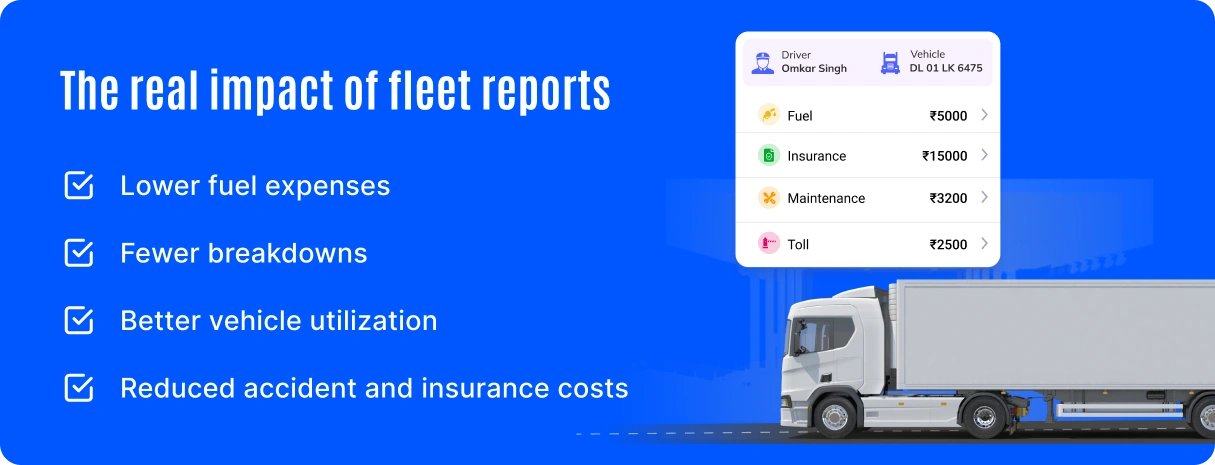How Fleet Reports Help in Reducing Operational Costs

Every fleet manager knows the story behind, where the fuel goes, why breakdown happens and which driver needs guidance. But when the months end and the fleet reports arrive, one question always remains – why are expenses higher than expected?
Fuel bills keep rising, maintenance takes longer than planned and vehicles line up for repairs. The real challenge isn’t management– its visibility. With so many vehicles, drivers and routes to manage, fleet teams miss small issues until they start costing more.
That’s where the fleet reports help. They collect data about routes, drivers and fuel use during every trip. Instead of reacting to problems before it occurs, managers can control, plan ahead and make every trip count.
Turning fleet data into real savings
Smart decisions start with good data. Without reports, it’s hard to know why costs keep rising and where the operations are losing money and time. Fleet reports give a clear picture. They show how much fuel is used, when vehicles need servicing and how efficiently the driver performs on the road. With the right information, managers can act early and fix small issues before they actually happen. When used regularly, it stays organised, smarter and manages vehicles effectively.
Key reports that help reduce operational costs
Fleet reports cover different areas of your business. Each one helps you control a specific part of your expenses.
Fuel reports
- Fuel typically accounts for 30–40% of fleet operating expenses.
- Monitor fuel level, consumption and refueling for every vehicle.
- They help detect theft, find inefficient routes, and identify drivers who idle too long.
- Over time, these reports help reduce waste and save money.
Maintenance reports
- Record of all maintenance, from servicing to replacement.
- They show which vehicles need attention before a breakdown happens.
- This prevents costly repairs and reduces downtime.
Driver Behaviour reports
- Record how drivers handle vehicles.
- Identify risky habits like speeding, harsh braking and idle time.
- Managers use these data insights to train drivers and cut cost effectively.
Trip and route reports
- Compare planned routes with actual trips.
- They show where time or fuel is being wasted.
- Managers can use these reports to find shorter or faster routes that save both time and money.
Utilization reports
- Show which vehicles are used the most and which are sitting idle.
- Managers can balance workloads or remove underused vehicles to cut extra expenses.
The reports give you a complete view of how different operations work together to keep fleets running smoothly. With these systems in place, data turns into measurable savings.
How fleet managers use these reports
This approach helps managers take quick action, avoid delays, and keep expenses under control. Fleet managers rely on reports to turn daily activities to practical decisions. They compare performance data, track patterns and make small changes that reduce costs.
For example, imagine a fleet manager responsible for 50 delivery trucks.
After evaluating the reports, they notice:
- Fuel reports show higher consumption on certain routes.
- Driver behaviour reports reveal long idling periods.
- Maintenance data shows repeated repair issues for specific trucks.
Based on this insight, managers take corrective measures:
- Adjusts the routes to reduce traffic delays.
- Provide training to those drivers who spend too much time idling.
- Plans preventive maintenance to stop repeated breakdowns.
Within a few weeks, the fleet saves 8–10% on fuel and reduces downtime significantly.
The Future of fleet reporting
The role of AI in fleet reports is growing fast.Today. AI helps managers to track fuel use, monitor driver behaviour with video analytics and predict maintenance before a breakdown occurs. These tools make fleet management easier. They cut manual work, spot small issues early and deliver results quickly. Reports will not only show data but also explain the reasons behind it.
For managers and integrators, these systems reduce manual tasks and improve accuracy.The future of fleet reports is powered by AI that makes data easy to understand and act on.
Conclusion
Fleet reports help managers understand where money is being spent and how to save it. They make it easier to spot problems, fix them early, and keep operations running smoothly.
Using these reports regularly helps reduce fuel use, prevent breakdowns, and improve driver performance. As AI becomes more common, fleet reports will become even smarter — showing not just data, but clear actions to take. Fleets that use these tools today will run more efficiently and save more in the future.



